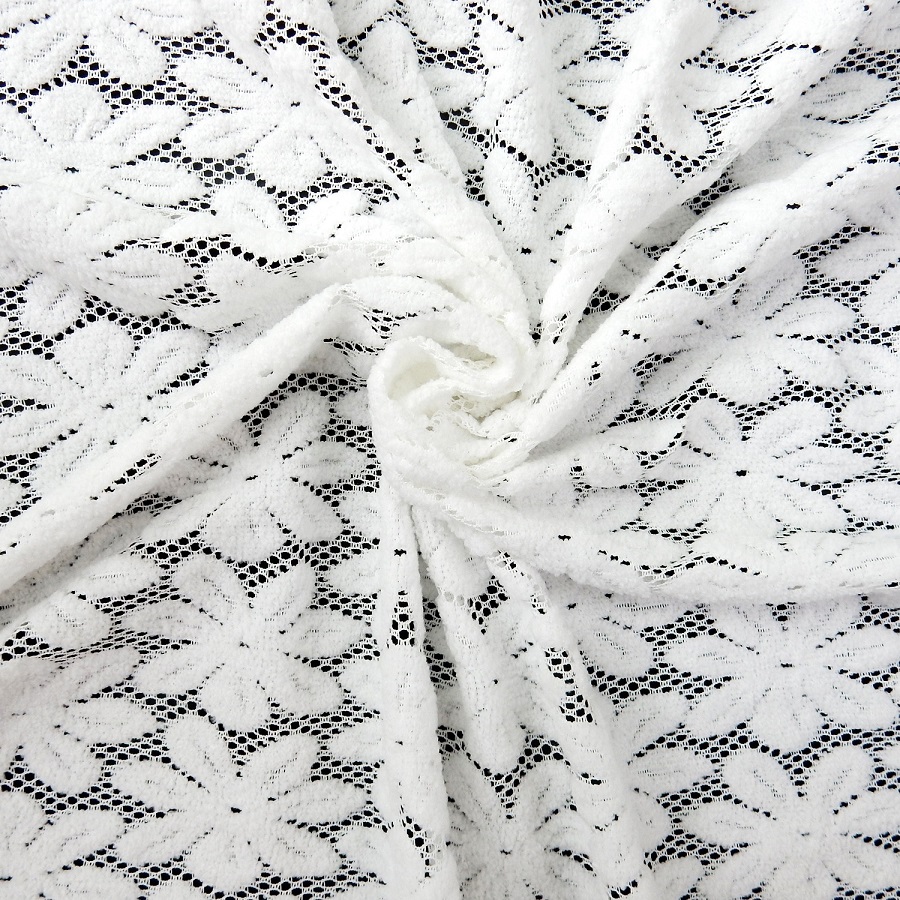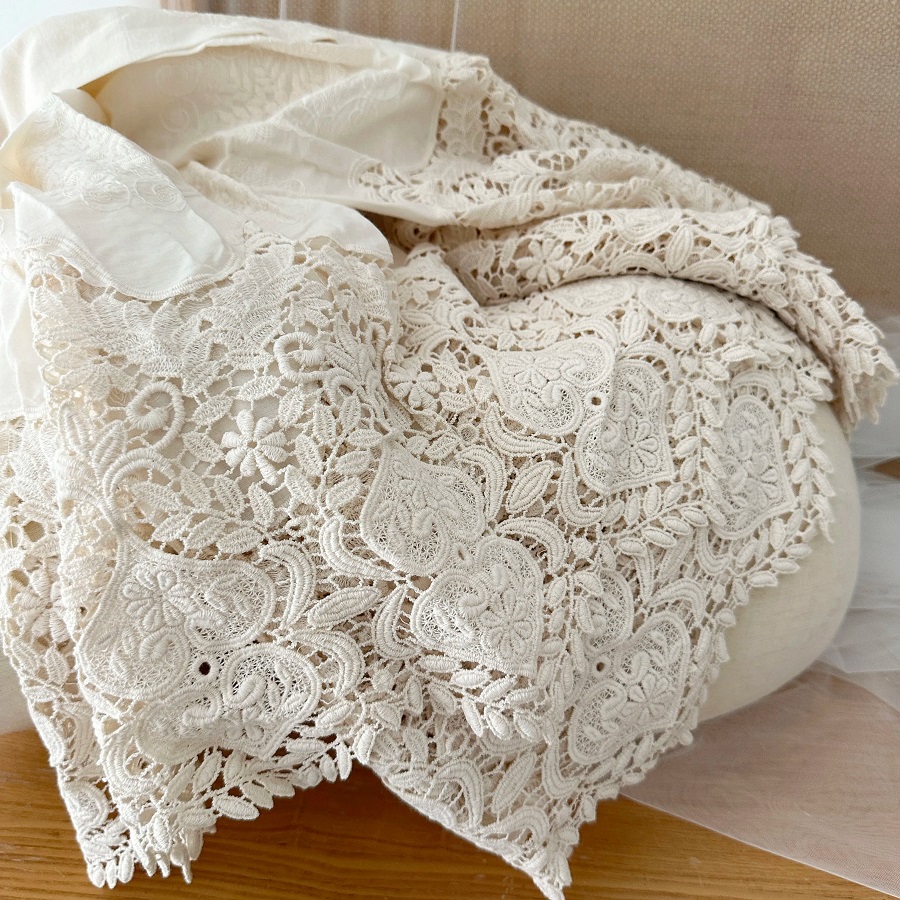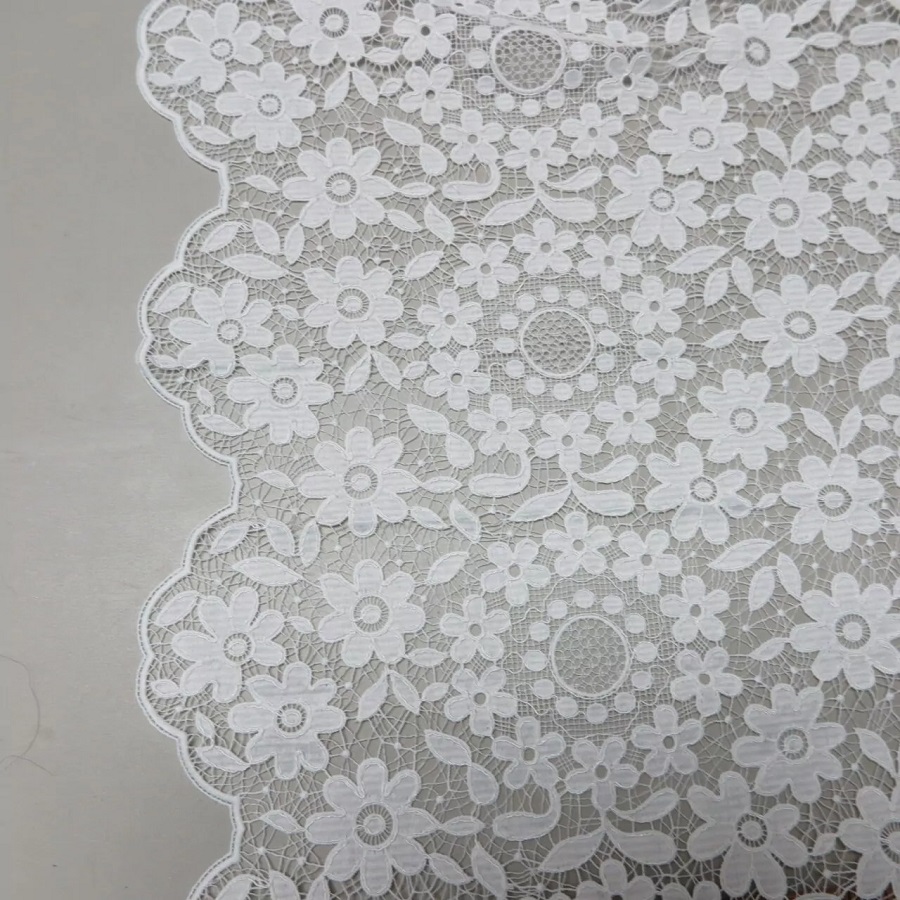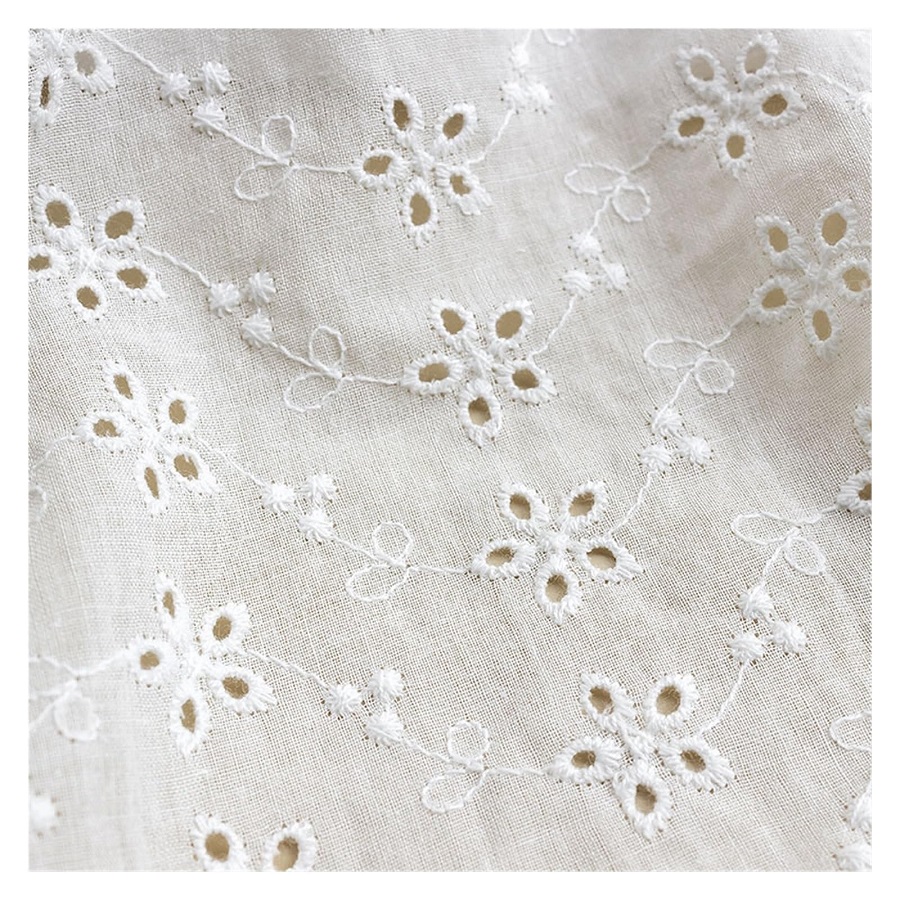Cotton lace fabric is an enchanting material that has captivated designers, crafters, and fashion enthusiasts alike. This beautiful textile infuses projects with a sense of elegance and femininity, making it a popular choice for various creative applications. In this article, we will explore the different aspects of cotton lace fabric, including its history, characteristics, common uses, sewing techniques, and project ideas that inspire you to incorporate this exquisite fabric into your creations.
Understanding Cotton Lace Fabric
The Essence of Cotton Lace
Cotton lace is a type of fabric that combines the intricate and delicate designs commonly associated with lace textiles with the natural softness and breathability of cotton. Lace has been a cherished textile for centuries, often used to embellish garments and household articles. Cotton lace brings a unique charm that balances beauty with practicality, making it suitable for various applications.
Historical Background
The history of lace dates back to the late 15th century, primarily in Europe, where intricate needlework was developed to create beautiful decorative patterns. Varying styles of lace emerged, such as Venetian lace, Chantilly lace, and English lace. Cotton lace is one of the more accessible forms of lace, often produced in wider widths and featuring patterns that range from simple to highly intricate. Over time, cotton lace has found its way into modern fashion and home decor, retaining its timeless appeal.

Characteristics of Cotton Lace Fabric
Texture and Feel
Cotton lace fabric has a soft, smooth texture, characteristic of cotton fibers. This makes it comfortable against the skin, which is essential for garments worn close to the body. The delicate apertures of lace give it a light, airy feel that complements its visual beauty.
Breathability and Insulation
One of the most practical attributes of cotton lace is its breathability. Being a natural fiber, cotton allows for air circulation, which is particularly beneficial for summer garments. Additionally, cotton lace provides modest insulation, making it versatile for various seasons.
Versatility in Design
Cotton lace is available in an array of patterns, colors, and styles, making it suitable for numerous applications. From floral motifs to geometric designs, the variety enables crafters and designers to choose lace that best aligns with their creative vision. Its adaptability allows it to seamlessly blend with other fabrics, enhancing the overall aesthetic of a piece.
Common Uses of Cotton Lace Fabric
Fashion and Apparel
Dresses
Cotton lace is a popular choice for creating beautiful dresses, especially for occasions like weddings, parties, or summer outings. Designers often use it for overlays, sleeves, or decorative elements to add a touch of elegance to the garment.
Tops and Blouses
Cotton lace tops and blouses can create a lovely layered look. Whether used as a primary fabric or as accent details like sheer panels and trims, cotton lace brings femininity and charm to casual and formal wear alike.
Home Décor
Table Linens
Cotton lace is frequently used for creating tablecloths, napkins, and runners. The delicate patterns and textures add sophistication to dining experiences, making any table setting more inviting and elegant.
Curtains and Draperies
Using cotton lace for curtains can create a dreamy, soft ambiance in any room. Light-filtering lace allows natural light to enter while providing a sense of privacy, perfect for bedrooms or living spaces looking for a cozy touch.
Craft and DIY Projects
Accessories
From headbands to handbags, cotton lace can beautify a wide range of accessories. Craft enthusiasts love adding lace trimmings to various items, creating unique, handcrafted pieces that showcase personal style.
Embellishments
Cotton lace can be used to embellish almost anything, from altering existing garments to enhancing home items like pillows or throws. Its versatility makes it an essential material for crafters looking to elevate their creations creatively.
Working with Cotton Lace Fabric
Preparation Tips
When working with cotton lace, proper preparation is essential to achieve the best results in your projects.
Pre-Washing
Always pre-wash your cotton lace fabric before starting your project, following the care instructions to prevent any shrinkage or color bleeding later on. Gentle washing in cold water is typically recommended.
Pressing
Cotton lace can wrinkle easily, so it’s helpful to press the fabric before cutting or sewing. Use a low heat setting and a pressing cloth to avoid damaging the delicate fibers. Ensuring a smooth fabric will lead to more accurate seams and a finished product that looks polished.
Sewing Techniques
Sewing with cotton lace can be challenging, given its delicate nature. Here are essential tips to keep in mind:
Use the Right Needle
When sewing cotton lace, opt for a sharp needle designed for lightweight materials. A fine needle will prevent snagging and tearing while ensuring smooth stitching.
Pinning and Cutting
Be gentle when pinning and cutting cotton lace, as it can easily shift or fray. Use fine pins or fabric clips for better control, and cut with sharp scissors or a rotary cutter to maintain clean edges.
Stitch Selection
A straight stitch is typically the best choice for sewing cotton lace. However, for areas that require stretch or movement (like armholes or hems), consider using a zigzag or stretch stitch to accommodate the fabric’s characteristics.
Finishing Techniques
After sewing your cotton lace projects, finishing techniques can enhance their appearance and functionality:
Hemming
To avoid fraying edges on cotton lace, consider using a rolled hem or a narrow hem. This creates a clean finish that keeps the delicate lace intact while adding to the garment’s elegance.
Adding Stabilizers
For areas that may see more stress or wear, such as necklines or cuffs, adding a lightweight stabilizer can help prevent distortion during sewing and wearing. Be sure to choose a stabilizer that is compatible with lace.

Project Ideas Using Cotton Lace Fabric
Cotton Lace Dress
Materials Needed
- Cotton lace fabric (main fabric and lining)
- Sewing machine
- Thread
- Scissors
- Pattern pieces for dress design
Instructions
- Choose Your Pattern: Select a dress pattern that features lace. Patterns with overlays, yokes, or sheer elements work beautifully with cotton lace fabric.
- Cut the Fabric: Cut the cotton lace according to the pattern instructions, ensuring that the delicate fabric is handled carefully.
- Sew the Dress: Follow the pattern guide to sew the dress. Use pins or clips to secure lace pieces together, and remember to use a thin needle for stitching.
- Finish Seams: Hem the edges and finish any raw seams, avoiding fraying. Consider lining the dress for additional support and to keep the lace from becoming sheer.
Cotton Lace Table Runner
Materials Needed
- Cotton lace fabric (long enough to cover the table)
- Sewing machine
- Thread
- Scissors
Instructions
- Measure the Table: Measure your table to determine the desired length and width for the lace runner.
- Cut the Fabric: Cut the cotton lace into the desired shape, allowing for extra fabric for hems.
- Hem the Edges: Hem all raw edges to prevent fraying. A narrow rolled hem is a great option for lace.
- Style Your Table: Place the lace runner on your table to add an elegant touch to dining or special occasions.
Cotton Lace Headband
Materials Needed
- Cotton lace fabric
- Elastic band
- Sewing machine
- Thread
- Scissors
Instructions
- Cut the Lace: Cut a strip of cotton lace fabric, as well as a piece of elastic band to fit comfortably around your head.
- Sew the Fabric: Fold the lace strip in half lengthwise, right sides together, and sew along the long edge to create a tube.
- Turn and Attach Elastic: Turn the fabric tube right side out. Insert the elastic band into the tube and sew the ends securely to the lace.
- Finish: Hem the lace edges if desired, creating a beautiful lace headband suitable for any occasion.
Enhancing Your Cotton Lace Projects
Color and Dye Techniques
Cotton lace fabric can be dyed or colored to suit your project needs. Proper dyeing techniques can enhance the lace’s natural beauty and ensure that it complements your overall design:
Fabric Paint
Consider using fabric paint or dye to add color or patterns to plain cotton lace. This technique allows for creativity in your design and can bring a unique flair to any project.
Tea or Coffee Dying
For a vintage look, you can tea- or coffee-dye white cotton lace to create an aged effect. Simply soak the lace in a mixture of brewed tea or coffee, then rinse and dry.
Embellishments
Adding embellishments to your cotton lace projects can enhance their beauty:
Beading
Sewing beads along the edges of cotton lace can create an eye-catching effect. Beads can reflect light, adding a luxurious touch to your projects.
Appliqué
Combine cotton lace with colorful fabric appliqués for an attractive contrast. This technique not only adds color but also textures that can elevate your design.

Caring for Cotton Lace Fabric
Washing and Maintenance
To ensure that cotton lace maintains its elegance and beauty, proper care is necessary:
- Washing: Always wash cotton lace in cold water on a gentle cycle. Avoid bleach, which can harm the fabric’s fibers and colors.
- Drying: Air drying is preferred for cotton lace. Lay it flat or hang it to dry, avoiding direct sunlight to prevent fading.
- Ironing: Iron cotton lace on a low heat setting, using a pressing cloth to protect the delicate fibers. Ensure all wrinkles are removed without damaging the intricate patterns.
Conclusion
Cotton lace fabric is a timeless and versatile material that adds a delicate touch to various creations. Whether you’re designing clothing, home décor items, or accessories, the enchanting quality of cotton lace elevates your projects and inspires creativity. By understanding its characteristics, common uses, and sewing techniques, as well as embracing project ideas and care tips, you can fully harness the beauty of cotton lace fabric in your crafting endeavors. Unlock the potential of cotton lace, and let your imagination flourish with every stitch and design!
